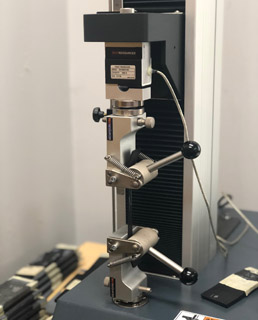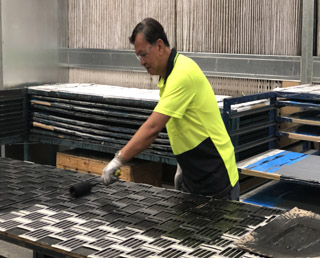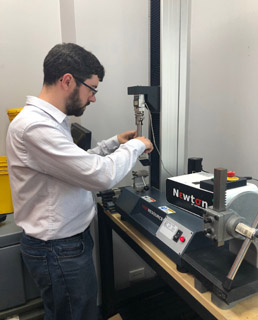How to Choose Quality Pulley Lagging for Your Operation
As the market becomes more saturated with lagging options, it is hard to know who to trust when it comes to selecting a superior pulley-lagging product. However, there are three main signs to look out for to ensure you are making the right choice. If you choose a lagging that doesn’t hold up to your application, unscheduled downtime will become an inescapable problem on site, and you’ll end up with disgruntled clients.
1: Is the lagging internally or externally tested?
 It is all too easy to test lagging in house and even easier to position those results to suite a certain product. Its best practice to look for a supplier who tests their product externally to get independent results. We’ve made a list of which tests are most important below:
It is all too easy to test lagging in house and even easier to position those results to suite a certain product. Its best practice to look for a supplier who tests their product externally to get independent results. We’ve made a list of which tests are most important below:
- Tensile Strength
- Rubber elongation
- Bonding strength
- Chemical composition of tiles
The first three are pretty standard, but you may not have considered the fourth. The truth is, the chemical composition of tiles is important to ensure durability and alumina content while also validating that they bond to the rubber as powerfully as possible. If ceramic tiles crack or begin to fall out, it is a type of failure that can lead to unscheduled downtime.
This testing should always be compliant to site specifications and, even more importantly, should remain unchanged from batch to batch. Whether you pay for a poor, medium, or high quality lagging, you should be able to ensure you get the same quality of lagging each time you place an order.
2: Best in class manufacturing capabilities
 A supplier with highly capable manufacturing and operations has many benefits. The first is that you will be able to customize your lagging solution. Sometimes an off-the-shelf solution is not appropriate. Companies that manufacture with a high degree of sophistication allow you to discuss your unique and dynamic situation to a regional sales representative, who can convey the message straight to the manufacturing manager to produce your order exactly how you require it.
A supplier with highly capable manufacturing and operations has many benefits. The first is that you will be able to customize your lagging solution. Sometimes an off-the-shelf solution is not appropriate. Companies that manufacture with a high degree of sophistication allow you to discuss your unique and dynamic situation to a regional sales representative, who can convey the message straight to the manufacturing manager to produce your order exactly how you require it.
When slippage occurs, it causes strain on many parts of your conveyor. Quite often this means you need a solution right now. The ability to produce lagging solutions quickly, while also maintaining a large inventory of standard configurations is also something to investigate with any lagging partner.
It’s also important to understand where your product is coming from. Sometimes to get to a certain price, the quality of lagging is greatly reduced, and many times unsafe practices are used. Be sure to ask these questions of your vendor to ensure your organization knows the origins of the product in which they are investing:
- Am I supporting ethical manufacturing processes?
- Does the manufacturing facility use reputable suppliers of rubber and ceramic?
- How do I know if quality assurance processes have been followed correctly?
- Can I ensure my product will arrive as I specified, and on time?
3: Quality Assurance
 The third and arguably most important factor to look out for is quality assurance. Manufacturing lagging is a big feat – there are varieties of different processes and functions, which ultimately means a variety of different challenges, which can result in a defective product turning up on site.
The third and arguably most important factor to look out for is quality assurance. Manufacturing lagging is a big feat – there are varieties of different processes and functions, which ultimately means a variety of different challenges, which can result in a defective product turning up on site.
As a result of all the moving parts – it’s almost necessary that your lagging provider has a dedicated quality assurance engineer. Without the expertise of an engineer checking your lagging for quality issues before it is shipped to your facility, you may encounter issues further along the line when the pulley is already lagged and installed on site.
Looking to get even more out of your lagging?
Download Flexco’s White Paper on Variant Friction Coefficients of Lagging and Implications of Conveyor Design. The paper will help you choose the right lagging for your conveyor belt system, which can result in lower operating costs.
Authored By: Kevin Fales, Product Manager
Fales manages the belt conveyor product (BCP) line, providing product development and engineering with guidance on market requirements for both new product concepts and existing products. He also leads the development of technical and promotional literature supporting BCP line. Fales graduated from Grand Valley State University with a bachelor’s degree in Marketing, and from Western Michigan University with a Master of Business Administration.
Subscribe to the Flexco Blog
Related Blogs
Published Date
December 17, 2019Product Group
- Bondable and Weld-On Pulley Lagging
Issue
- Slippage